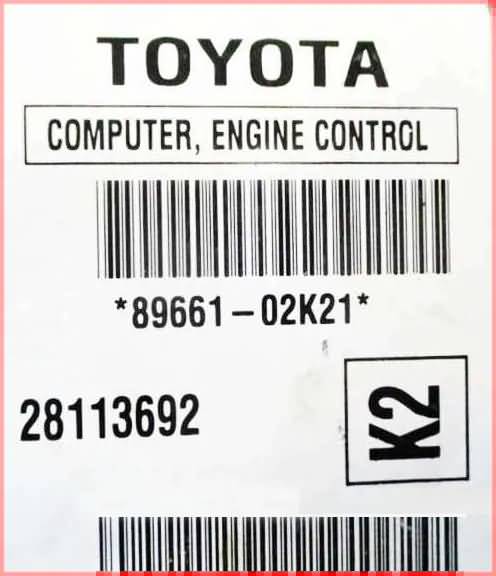

The ninth digit is the check digit, which is used to detect fraudulent VINs.The fourth through eighth digits describe a vehicle’s model, body type, restraint system, transmission type, and engine code.The third digit, when coupled with the first two digits, indicates the vehicle’s type or manufacturing division.ĭigits in position 4 through 9 make up the Vehicle Description Section (VDS):.The second digit represents the manufacturer and the region of vehicle production.
 The first digit defines the country of origin or the final point of vehicle assembly. The World Manufacturer Identifier (WMI) represent the first three digits of an automotive VIN: VIN information is sectioned out into three groups: World Manufacturer Identifier, Vehicle Descriptor Section, and the Vehicle Identifier Section. There are also security features that can be used with PDF417. Some US Federal labels and State vehicle registration documents store VINs within PDF417 barcodes since data capacity and space efficiency are two of its major advantages. Automotive auction houses utilize the one-dimensional Code 128 barcode type VIN representations for cars in their auction runlists. Ford uses a QR Code for marketing on their window stickers. For example, General Motors (GM) now utilizes the Data Matrix barcode symbology to represent the VIN on some models. The Uniform Symbology Specification Code 39 (USS Code 39) is used for vehicle identification, and while based on Code 39, it does not contain start and stop characters.Īutomotive manufacturers are now utilizing two-dimensional barcodes to represent VINs on their automobiles. The Remarketing cookies will be used by Google to make our advertising practices more relevant and show our ads on websites other than and based on your past visits to our website.Historically, the standard Vehicle Identification Number (VIN) embedded within a barcode and attached to a car has been represented by the Code 39 symbology. We may also use cookies to advertise online to make easier for you to access again ("Remarketing"). These cookies usually generate aggregate statistics that are not associated with an individual. This helps us improve our product and ensures that users can easily find what they need on our website.
The first digit defines the country of origin or the final point of vehicle assembly. The World Manufacturer Identifier (WMI) represent the first three digits of an automotive VIN: VIN information is sectioned out into three groups: World Manufacturer Identifier, Vehicle Descriptor Section, and the Vehicle Identifier Section. There are also security features that can be used with PDF417. Some US Federal labels and State vehicle registration documents store VINs within PDF417 barcodes since data capacity and space efficiency are two of its major advantages. Automotive auction houses utilize the one-dimensional Code 128 barcode type VIN representations for cars in their auction runlists. Ford uses a QR Code for marketing on their window stickers. For example, General Motors (GM) now utilizes the Data Matrix barcode symbology to represent the VIN on some models. The Uniform Symbology Specification Code 39 (USS Code 39) is used for vehicle identification, and while based on Code 39, it does not contain start and stop characters.Īutomotive manufacturers are now utilizing two-dimensional barcodes to represent VINs on their automobiles. The Remarketing cookies will be used by Google to make our advertising practices more relevant and show our ads on websites other than and based on your past visits to our website.Historically, the standard Vehicle Identification Number (VIN) embedded within a barcode and attached to a car has been represented by the Code 39 symbology. We may also use cookies to advertise online to make easier for you to access again ("Remarketing"). These cookies usually generate aggregate statistics that are not associated with an individual. This helps us improve our product and ensures that users can easily find what they need on our website. 
These cookies allow us and our third-party service providers to recognize and count the number of visitors on our website and to see how visitors move around our website when they are using it.

These cookies are necessary for our website to work. For example, they're used to log you in, save your currency preferences or provide a shopping cart experience. We use required cookies to perform essential website functions.








 0 kommentar(er)
0 kommentar(er)
